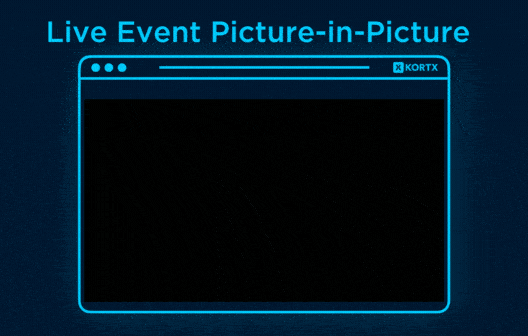The 2024 Summer Olympics are coming up quickly, so if you’re considering advertising during the games, now is the time to start.
NBCUniversal has already sold its advertising inventory and several sponsorship positions for the live Opening Ceremony.
Billions of fans will tune in to watch the action, making it a prime advertising opportunity for businesses of all sizes.
To help you get started, this article will examine key trends leading up to the Olympic games, offer some successful creative ad examples, practical tips, and review the rules and regulations.
📅 When and Where are the 2024 Summer Olympics?
In Paris, July 26 – August 11
How to Get Started with Olympics Advertising
Capitalizing on the potential reach of the Olympics requires strategic planning. Below are some practical tips to help brands make the most of their Olympic advertising campaigns.
1. Understand Device Habits & Viewer Preferences
With the shift towards digital media, advertisers must recognize and adapt to the changing device habits of their target audience. More viewers now watch the Olympics on digital devices, including smartphones and tablets.
Advertisers must tailor their strategies to meet viewers where they are. Ads should be optimized for different screen sizes and platforms for maximum impact.
2. Early Planning & Partner Vetting
The Olympics’ advertising space is highly competitive, making early planning essential. Brands should plan their campaign well before the event (ideally 9-12 months ahead) and choose their advertising partners carefully.
Here’s a sample timeline of what you can expect:
📅 Summer Olympics 2024 Advertising Timeline:
- 9 months prior: Identify preliminary Olympics marketing budget and media mix channels
- 8 months prior: Scope creative ideation and asset production timeline
- 7 months prior: Begin assessing marketing partners and their role within the holistic media mix
- 6 months prior: Build initial media plan and estimate digital channel budgets
- 5 months prior: Align media plan with marketing partners and align creative asset needs
- 4 months prior: Finalize media plan and consolidate creative specs for all partners/placements
- 3 months prior: Determine First-Party and Third-Party audience targeting strategy
- 2 months prior: Secure all partner inventory/placement IOs; finalize and distribute creative assets
- 1 month prior: Final QA of all media placements, creative assets, and audience targeting
This early vetting and collaboration with partners can ensure smoother execution and better alignment with the campaign’s goals.
3. Budget Considerations & Fluctuations
Olympic advertising often comes with a premium price tag. Brands should be prepared for budget fluctuations and ensure that the potential return on investment justifies any increase in spending.
It’s vital to balance making a significant impact with maintaining a sustainable advertising budget.
4. Engagement Timing
The Olympics span several weeks, but viewer engagement is typically higher in the early stages of the games. To leverage this peak interest, brands should consider frontloading their marketing efforts, capitalizing on the event’s initial excitement.
When You Should/Shouldn’t Advertise for the Olympics
Not all brands will benefit equally from Olympic advertising. Assessing whether the Olympics context aligns with your brand’s image and message is essential.
Smaller brands, in particular, should weigh the benefits of Olympic advertising against the challenge of competing for attention with larger, more established corporations.
A significant portion of the marketing budget to the Olympics will deplete resources for other initiatives and might not be the best strategy. Brands should consider the overall impact on their annual marketing goals and budget before committing to a large-scale Olympic campaign.
Olympic Games Advertising Regulations: Rule 40
“Rule 40” restricts marketing activities that can reference Olympic athletes, terms, and imagery during a designated “blackout” period around the Olympics.
What is Rule 40?
Rule 40 is a regulation established by the International Olympic Committee (IOC) to protect the exclusivity of Olympic sponsors and maintain the focus on athletes during the games.
Rule 40’s blackout period typically begins just before the Opening Ceremony and extends through the end of the games. Athletes cannot promote non-official Olympic sponsors during the blackout period through ads or social media referencing their Olympic participation.
Can Advertisers Use the Term “Olympics” in Their Advertising?
If you are not an official sponsor of the games, you cannot use Olympic branding. That includes using Olympic-related verbiage, logos, competing athletes (unless you have received a waiver from the IOC), music, or images.
Non-sponsored brands are also barred from using official pictures, results, and trademarked phrases or words with accompanying hashtags and meta tags.
5 Strategies for Successful 2024 Summer Olympics Advertising Campaigns
The Paris Summer Olympics are poised to be the most-watched event in 2024.
1. Tailor Your Creative Messaging & Promotions to the Olympic Games
Effective ad creatives are essential in Olympic advertising, cutting through the clutter of numerous ads to prevent audience fatigue. This is best achieved when the ad features Olympic-specific content and taps into the creative excitement of the games.
During the 2016 Rio games, Panasonic crowdsourced a campaign to encourage audience engagement on X (formerly Twitter) called “#Superfans.”
Watching @TeamGB today? Make sure you send your support using #Superfans for a chance to win a TV! pic.twitter.com/KgpbVGuL4W
— Panasonic Europe (@PanasonicEurope) August 13, 2016
Fans posted photos with #Superfans, and Panasonic UK offered incentives (like Twitter contests) to keep the momentum going.
During the 2020 Olympics, Peloton emphasized Olympic athletes and the community in their ad to boost brand awareness.
Not all brands have the budget to feature Usain Bolt. Other ideas include offering discount promotions based on the number of gold medals won by a country in specific events, Olympic-inspired hashtag promotions on social media, and custom trigger ads.
The goal is to link the brand directly with the Olympic spirit.
2. Choose the Right Advertising Medium
After crafting an Olympic-specific campaign, the next critical step is choosing the right advertising medium for your brand.
Linear TV ads, for instance, are notably more expensive, with costs rivaling those of Super Bowl commercials.
Such high-profile advertising avenues may be feasible for larger brands with substantial budgets. Alternative channels like Connected TV (CTV) or Online Video (OLV) yield better results for many companies, especially those looking for an option that fits their budget.
ACR (Automated Content Recognition) data is an alternative strategy for brands with limited budgets or those not suited for linear TV commercials.
What is the biggest challenge of Olympics advertising?
“The challenge with Olympic advertising is the event’s broad appeal. It’s crucial to maintain focus on your core audience and utilize the Olympics as a platform for unique messaging.”

3. Utilize Automated Content Recognition (ACR) Data
Automated Content Recognition (ACR) data is built into most smart TVs. ACR providers can decipher how and where viewers consume content (e.g. OTT, DVR, AVOD, or app) and the shows, movies, events, and ads they see on a second-by-second basis.
For brands unable to afford linear TV commercials, ACR data can target people who have watched the Olympics, allowing advertisers to reach engaged fans through different tactics.
Advertisers can also use ACR data to understand their audience’s preferred platforms and devices. These viewers can be retargeted with related ads on their mobile devices.
Example: A large audience segment predominantly watches Olympic swimming events through a specific smart TV app. Advertisers can retarget these viewers with tailored swimming gear advertisements on their mobile devices.
Olympics advertisers can customize campaigns for an audience already engaging with the event, adjusting ad placements based on preferences for live events, replays, or highlights.
Want to advertise for the Olympics on a limited budget? Try ACR.
Brands with smaller budgets can use Automated Content Recognition data to target Olympic viewers, reaching enthusiastic fans no matter where they are.
4. Reach a Wider Audience with CTV, OTT, & FAST Advertising
Along with ACR data, brands with lower budgets can also use CTV (Connected TV), OTT (Over-the-Top), and FAST (free ad-supported TV) advertising to reach viewers.
With shifting viewer preferences, more people are turning to CTV and OTT platforms for entertainment than ever before. Even with the temporary linear TV boost during the games, eMarketer estimates that the period from 2025 through 2027 will mark three consecutive YoY decreases in TV ad spend.
Are there any advertising mediums you recommend for certain brands over others?
“The choice of medium largely depends on the campaign’s objectives and goals. We’re witnessing a notable shift from traditional linear TV to digital platforms as viewers increasingly opt for Connected TV (CTV) and Over-The-Top (OTT) services. This transition presents many opportunities for advertisers, who must first understand and then align with the device habits of their target audience and how these intersect with Olympic viewership habits.
With a growing number of people likely to watch the Olympics on their phones or other connected devices, CTV and OTT offer ideal platforms to reach audiences engaged in live events, highlights, or replays.
Think in the context of the Olympics, recognizing that viewers’ content consumption habits undergo significant changes during such events. Even those who don’t usually watch much TV may find themselves tuning into the Olympics.”

Unlike traditional linear TV, which broadcasts the same ads to a broad audience, CTV, OTT, and FAST platforms offer advanced targeting options like demographics, viewing habits, and interests.
With interactive CTV advertising, Olympics advertisers can allow viewers to further engage with ads using components like QR codes, live event Picture-in-Picture, and more. Viewers can interact with the ads through their devices, leading to higher engagement over other ad types.
📚 Related article: Interactive CTV Ads are the Secret to Higher Engagement: Read more about how interactive CTV ads can keep your audience hooked.

In this live event Picture-in-Picture ad, the watch brand, Tissot, plays alongside game coverage. Viewers can still watch the game without the annoyance of an ad interruption.
Magna found that interactive ads drive a 47% gain in time spent with a marketing message compared to a non-interactive ad.
💡 Tip: CTV advertising isn’t limited to just the events. The surrounding content, like analysis, pregame, and postgame shows, also offers valuable advertising opportunities.
5. Incorporate RSS Feeds for Real-Time Engagement
Custom triggers in RSS feeds are a sophisticated mechanism where specific events or achievements, such as winning a gold medal, can activate predefined actions in a digital system.
Brands can use Olympic RSS feeds, which update medal tallies, in their advertisements. These feeds could trigger specific advertisements or promotional content whenever a country, such as the USA, achieves a certain number of medals.
Example: If the USA wins seven gold medals, or accumulates a total of 47 medals, these specific milestones could automatically trigger advertising content or promotions.
Advertisers can craft compelling narratives that align with audience excitement and global events by tapping into real-time data, such as Olympic medal counts.
It also helps save on advertising costs because the ad is only triggered if certain conditions are met. If they aren’t, the ad won’t trigger nor cost the advertiser precious ad spend.
How can Olympic advertisers leverage/use paid search to promote their brand during the games?
“Olympic advertisers have the opportunity to promote their brand effectively by using paid social strategies. This includes organizing contests and giveaways, promoting offers, leveraging influencer marketing, strategically scheduling ads around events, geo-targeting specific regions, and targeting certain audiences to enhance brand awareness, engagements, and outcomes.”

Olympic-Scale Success in 2024
As the 2024 Summer Olympics approach, advertisers have a unique opportunity to engage with a global audience, making strategic and innovative advertising essential. Utilizing Automated Content Recognition (ACR) data and platforms like CTV, OTT, and FAST allows for targeted and interactive advertising, reaching viewers across various devices.
Ad creatives should embody the Olympic spirit and stand out in a crowded advertising landscape. Early planning, budget consideration, and understanding viewer preferences are crucial for a successful campaign that resonates with the excitement of the Olympics.
Go for Gold in Olympics Advertising 2024
Partner with KORTX for impactful Olympics campaigns that reach your target audience, no matter where they are in the world.
About the Author
Sam Wilson is a Sr. Account Executive at KORTX. He brings over a decade of experience working across various verticals on both regional and national campaigns. Sam’s expertise lies in cultivating strong client relationships, devising strategic campaigns, and delivering measurable results that exceed exceptions.
